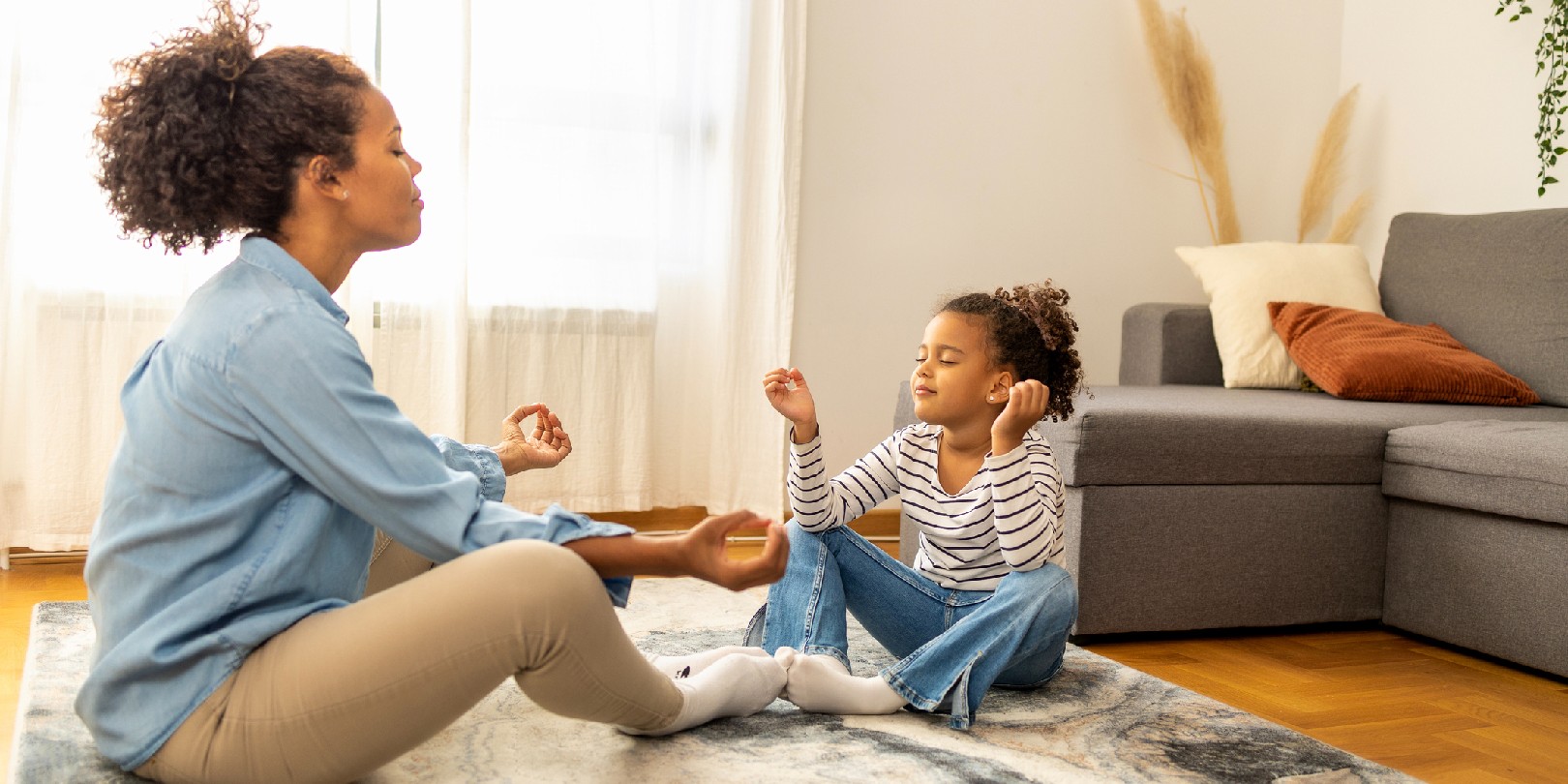Mindfulness for Kids: 10 Exercises and Companion Activities

In today’s fast-paced world, teaching children mindfulness can provide them with invaluable tools for managing stress, enhancing focus, and fostering emotional well-being. Mindfulness is the practice of being fully present and aware of one’s thoughts, feelings, and surroundings. By incorporating mindfulness exercises into a child’s routine, we can help them develop important skills that promote calmness, self-awareness, and empathy. It can seem difficult to get rambunctious children to follow a mindfulness practice, but these tips can help. In this blog, we will explore a few mindfulness exercises for kids along with companion activities to make the practice enjoyable and engaging for everyone involved.
1. Mindful Breathing
Guide children to focus on their breath. Encourage them to take slow, deep breaths while noticing the sensation of air entering and leaving their bodies. Tell them to feel their belly and inhale for a few seconds and that they should feel their stomach press outwards. Slowly blow the breath out through the mouth.
2. Body Scan
Lead children through a body scan, where they pay attention to different parts of their body from head to toe. Tell them this is especially good with scanning for feelings and emotions that show themselves through sensations. They can use their imagination to imagine a small creature, like a butterfly or a friendly robot, exploring their body with gentle touches.
3. Mindful Eating
Engage children in eating mindfully by having them pay attention to the flavours, textures, and smells of their food. Encourage them to take small bites, chew slowly, and savour each mouthful. They can also create a mindful eating collage by cutting out pictures of healthy foods and arranging them on a poster board.
4. Sensory Walk
Take children on a sensory walk in nature. Encourage them to notice the sights, sounds, smells, and textures around them. They can collect natural objects like leaves, stones, or pinecones to create a nature-inspired sensory jar.
5. Gratitude Journal
This option is especially good for kids to develop mental awareness and writing skills. Have children keep a gratitude journal where they write or draw three things they are grateful for each day. They can decorate the journal with colourful markers, stickers, or pictures of things they love. To have it become a routine, let them do this every night right before bed.
6. Loving-Kindness Meditation
Guide children in sending loving-kindness to themselves and others. They can create “kindness cards” by decorating index cards with positive messages or drawings and sharing them with family, friends, or even strangers.
7. Mindful Movement
Introduce children to yoga or simple stretching exercises that encourage mindful movement. They can create a “yoga adventure” story where they act out different animal poses or use their imagination to become characters from their favourite books.
8. Mindful Listening
Engage children in mindful listening by playing a game where they close their eyes and identify different sounds around them. They can create a sound map by drawing or colouring the sounds they hear.
9. Mindful Art
Encourage children to engage in mindful art activities like colouring mandalas, creating gratitude collages, or painting with watercolours. Display their artwork in a designated “mindfulness corner” to serve as a visual reminder of their mindful journey.
10. Mindful Storytelling
Read or create stories that promote mindfulness, such as tales about nature, kindness, or emotional awareness. Encourage children to discuss the story’s themes and how they relate to their own lives.
It is important to remember that teaching mindfulness to children should be approached with patience and understanding. Each child may have their own unique way of engaging with mindfulness practices, and it’s essential to create a safe and non-judgmental space for their exploration. Encourage open conversations and active participation, allowing children to express their thoughts, emotions, and experiences during the mindfulness exercises. By fostering an environment of acceptance and curiosity, we can help children develop a lifelong love for mindfulness and equip them with essential tools for navigating the ups and downs of life with grace and resilience.